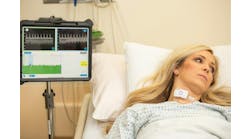Using telecommunications to connect stroke experts to stroke patients in rural areas continued to improve and sustain stroke care, according to new research in the American Heart Association’s journal Stroke.
This is the largest and longest evaluation of telemedicine for stroke and took place in rural Bavaria, Germany, the report says.
With the tele-medical linked stroke units, patients in regional hospitals had around-the-clock access to consultations with vascular neurologists at stroke centers, including evaluation of brain imaging and patient examination via videoconferencing when needed.
Researchers reviewed the use of telemedicine for 10 years and found:
- The number of patients receiving the clot-busting drug tissue plasminogen activator (tPA) for ischemic (clot-caused) stroke rose from 2.6 percent to 15.5 percent.
- The median time between a patient’s arrival at a regional hospital until tPA was administered fell from 80 minutes to 40 minutes, exceeding American Heart Association/American Stroke Association’s “target: stroke” goal of treating at least 50 percent of patients within 60 minutes.
- The median time between onset of stroke symptoms and receiving tPA fell from 150 minutes to 120 minutes.
“Cooperation within medical networks can be a huge benefit for patients. Telemedicine is a wonderful option to support the close cooperation of physicians from regional hospitals and tertiary stroke centers,” Peter Müller-Barna, M.D., lead author and consultant in the department of neurology at the Agatharied Hospital in Hausham, Germany, said in a news release statement.
In 2003, telestroke units were introduced to 12 regional hospitals lacking neurology and neurosurgery departments in Bavaria, Germany. Telemedicine linked them with two neurological stroke centers with vascular neurologists and other neurological experts. By 2012, there were 15 telestroke units that had provided 31,864 consultations.
Between the first year of implementation and the end of 2012, the percentage of patients with stroke or mini-stroke who were treated at hospitals with telemedicine units rose from 19 percent to 78 percent. The researchers also found from 2003 to 2012, the proportion of patients transferred to stroke centers from regional hospitals fell from 11.5 percent to 7 percent.

